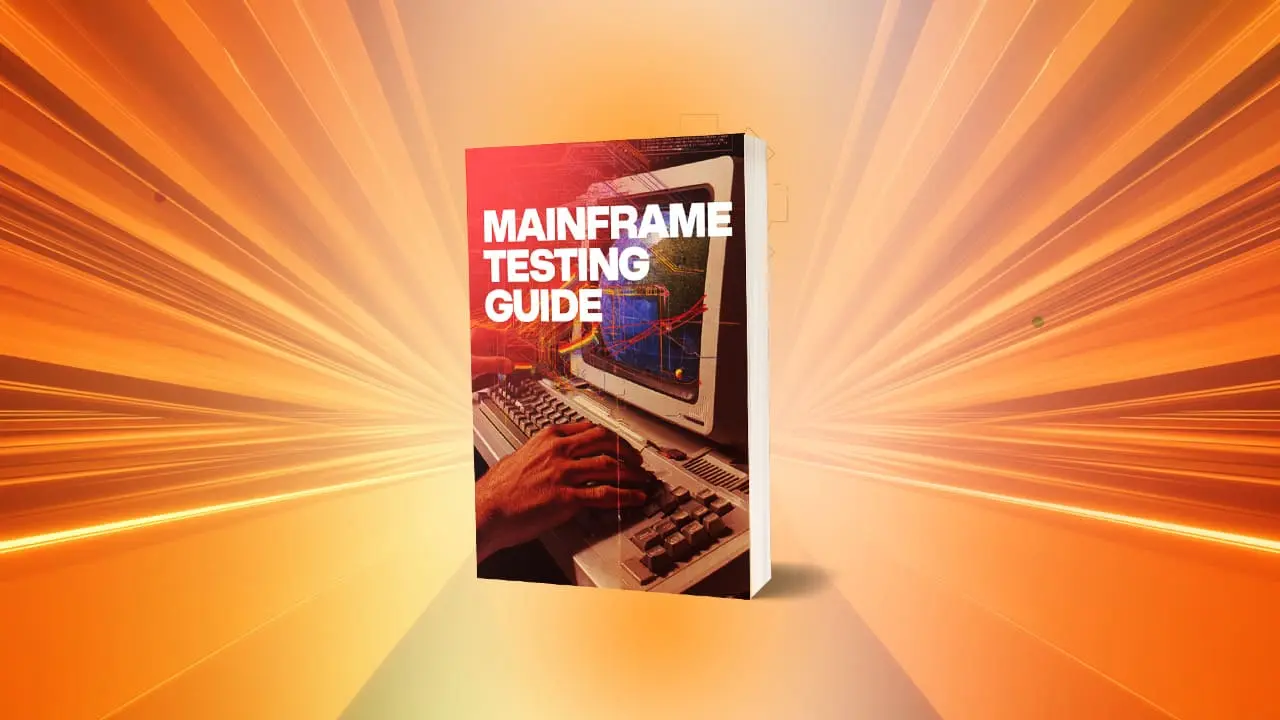What Is Mainframe Testing? Everything QA Teams Should Know

Mainframes aren’t relics of the past. They quietly power the systems you interact with every day, banking transactions, retail inventory, insurance claims, and government services. Despite the “legacy” label, they handle mission-critical workloads where reliability and security are non-negotiable.
That’s why mainframe testing is essential. QA teams play a key role in ensuring that these environments remain stable, performant, and compliant with industry regulations. Without proper validation, the risks aren’t just bugs, they can be service outages, failed transactions, or regulatory penalties.
If you’re already familiar with functional vs non-functional testing, mainframes demand both, but at a scale and complexity most modern platforms never reach.
What Is Mainframe Testing?
Mainframe testing basically checks the applications that run on the mainframes including CICS, IMES, DB2, etc. The objective is straightforward: keep transactional environments stable under such continuous load.
Unlike web and mobile software testing, mainframe software testing primarily involves batch jobs or data-intensive processing, where programs are written in legacy languages such as COBOL or PL/I. The stakes are high; a single missed defect could delay millions of transactions or disrupt services that are critical in nature.
In other words, you can compare testing a web app to checking the storefront, whereas testing a mainframe is comparable to stress-testing the vault, the place where all the money is stored.
To learn more about legacy vs modern coverage, read how end-to-end support for web automation testing brings visibility within enterprise ecosystems.
Types of Mainframe Testing
When people ask about the types of mainframe testing, they’re really asking how to validate such a broad and complex system. Here’s the breakdown:
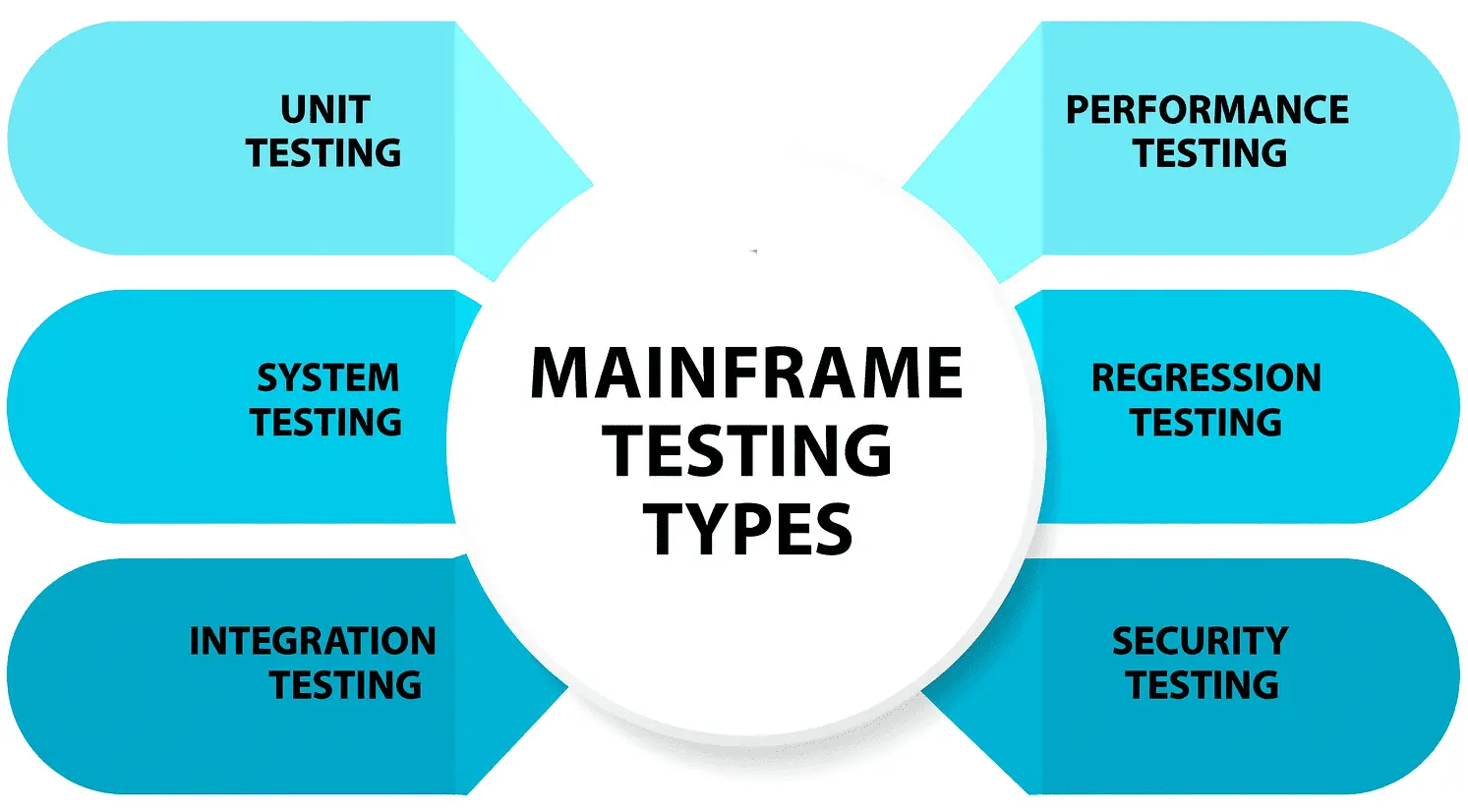
1. Unit Testing
Focuses on COBOL or assembler modules at the program level. For instance, validating a single COBOL program that calculates interest rates ensures early bugs are caught before they impact larger flows.
2. System Testing
Verifies a complete flow between different components. One of the typical use cases for position testing is ATM transactions, specifically how withdrawal requests are processed through account validation, transaction posting, and receipt generation without any issues.
3. Integration Testing
Checks whether the middleware, APIs and 3rd party system interaction is happening as intended. Consider a retail chain, where the point-of-sale system for each store updates central inventory in DB2; integration testing creates assurance that these interfaces behave consistently.
4. Performance Testing
Quantifies throughput of transactions, speed of batch processing, and response time. So, insurance claim batch jobs that we expect to run in three hours cannot take eight just because we poorly optimized them.
5. Regression Testing
Ensures that changes, be they updates, migrations, or fixes, don’t disrupt any existing functionality. A suite of legacy functions that cannot be disrupted must be validated against every change in the code.
6. Security Testing
It verifies that the application complies with the business and industry security and privacy policies and that sensitive data, such as financial records and health care information, is not compromised.
These layers together form the backbone of enterprise-grade validation. Without them, even small glitches can spiral into large-scale failures.
For comparison, check out black box vs white box testing, since mainframes require elements of both.
Why Mainframe Testing Is Challenging
Now, let’s talk about mainframe testing challenges. It’s not just about running scripts, it’s about navigating constraints unique to this environment:
- Complex infrastructure: Mainframes are layered with legacy code, schedulers, and multiple back-end systems.
- Costly environments: Running full-scale test environments is expensive, making efficiency a top priority.
- Limited expertise: Skilled mainframe testers are fewer today, as most new engineers focus on cloud and mobile platforms.
- Data-heavy compliance: Large datasets tied to financial or healthcare data raise privacy and regulatory hurdles.
- Job dependencies: Batch jobs and schedulers add another dimension of orchestration that testers must account for.
The real-world impact of these challenges is massive. In banking, downtime can cost hundreds of thousands of dollars per minute. In insurance, poorly tested batch jobs can delay claim settlements, frustrating customers and regulators alike. And because COBOL skills are scarce, even small defects can take longer to resolve, amplifying risk.
These hurdles explain why QA teams increasingly look toward mainframe automation as part of their strategy, aligning with practices seen in continuous testing.
Best Practices for Mainframe Testing
Here’s the thing: knowing the challenges is only half the battle. The real progress comes from applying best practices for mainframe testing:
- Automate regression where possible: Mainframe automation testing applications can drastically cut down manual rework, especially during frequent updates.
- Use virtualization and mocking: External dependencies can be simulated to reduce reliance on costly environments.
- Strengthen test data management: Secure, representative data sets are critical for realistic scenarios.
- Monitor performance continuously: Mainframes process huge volumes, so bottlenecks must be spotted early.
- Cross-train teams: Don’t isolate mainframe expertise. Train testers to understand both legacy systems and modern cloud apps.
If you’re wondering how to do mainframe testing, here’s a practical sequence:
- Define test objectives aligned with business-critical transactions.
- Prepare representative test data that reflects real-world scenarios.
- Automate regression suites for recurring validation.
- Integrate performance monitoring into your pipeline.
- Review results and feed them back into development.
This staged workflow ensures testing is systematic rather than reactive. It mirrors modern practices, such as shift-left vs. shift-right testing, where feedback loops drive continuous quality improvement.
Mainframe Testing Tools & Approaches
No discussion is complete without looking at mainframe tools for testing. The ecosystem includes both traditional and modern options:
- Legacy tools: IBM Rational Test, Compuware solutions, CA testing suites.
- Modern extensions: API-driven testing, DevOps toolchain integrations, and test data virtualization.
- Hybrid approaches: Many organizations now combine mainframe test coverage with enterprise-wide platforms, making it easier to unify practices across mainframe and cloud.
This is where mainframe automation testing applications shine. Instead of relying solely on outdated manual workflows, teams integrate automation into DevOps pipelines. For example, combining CI/CD orchestration with API-level mainframe validation ensures that regression tests run automatically after every deployment.
ACCELQ, for instance, has positioned itself to extend principles of automation testing into hybrid enterprise environments, mainframe included. By bridging legacy and modern testing approaches, QA teams reduce costs while improving reliability.
The Future of Mainframe Testing
Looking ahead, mainframes aren’t going away. They’re evolving into hybrid IT environments, where cloud and mainframe coexist. That means mainframe automation will become even more relevant, aligning with CI/CD and DevOps practices.
Expect to see:
- Greater adoption of regression automation.
- Continuous integration of mainframe systems into enterprise pipelines.
- Broader skillsets where QA engineers cover both legacy and cloud applications.
We’re also seeing a cultural shift. Organizations that once treated mainframe testing as a specialized silo are now weaving it into enterprise-wide quality strategies. Test data management will become smarter, with synthetic data reducing compliance risks. AI will assist in anomaly detection, helping teams cut through the noise of large transaction logs. And as mainframe systems become API-enabled, they’ll integrate more seamlessly with cloud-native testing frameworks.
This future reflects a slow but steady cultural shift, where AIOps for Test Automation reshape even the most traditional systems.

Conclusion
Mainframes still matter in 2025. They quietly power industries where downtime is never an option. Mainframe testing keeps them stable, secure, and compliant. But this isn’t just about preserving the past. It’s about making sure mainframes stay relevant and work in step with today’s business demands.
Here’s the thing. QA teams don’t have to treat mainframe testing as a separate world anymore. With ACCELQ, you can bring mainframe systems into the same automated ecosystem as your web, API, and backend applications. The platform handles 3270 and 5250 terminal automation, links processes across technologies, and gives you full end-to-end visibility from one place.
Investing in mainframe automation isn’t optional if you’re serious about long-term agility and stability. It’s what keeps business moving without interruptions. ACCELQ makes that possible with natural language logic, enterprise-wide orchestration, and intelligent test management, all working together to modernize the core without adding complexity.
When reliability meets speed, modernization stops being a buzzword and becomes reality. That’s the power ACCELQ brings to mainframe testing.
Smarter, Faster, Limitless Automation Awaits!
🤖 Take AUTOPILOT for a Test Drive Today
Unlock Limitless Potential
Yuvarani Elankumaran
Technical Consultant at ACCELQ
Yuvarani Elankumaran is a highly skilled technical consultant at ACCELQ. With over a decade of experience in the field of Test Automation, Yuvarani is a seasoned professional who is well-versed in a variety of programming languages and automation frameworks.
You Might Also Like:
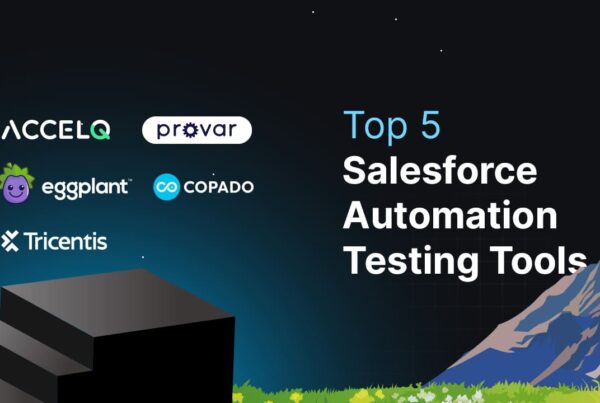 Top 5 Salesforce Automation Testing Tools In 2025
Top 5 Salesforce Automation Testing Tools In 2025
Top 5 Salesforce Automation Testing Tools In 2025
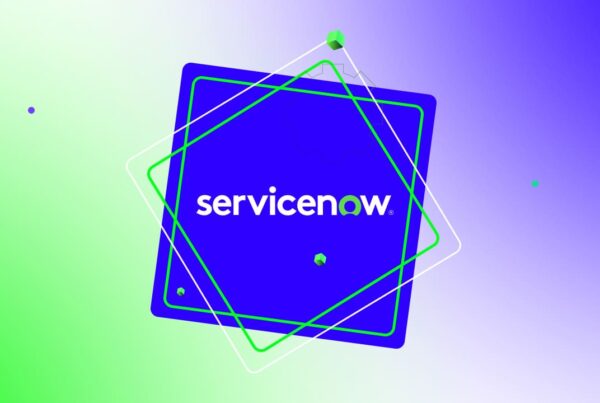 Reimagine ServiceNow Testing with AI-Powered Codeless Automation
Reimagine ServiceNow Testing with AI-Powered Codeless Automation
Reimagine ServiceNow Testing with AI-Powered Codeless Automation
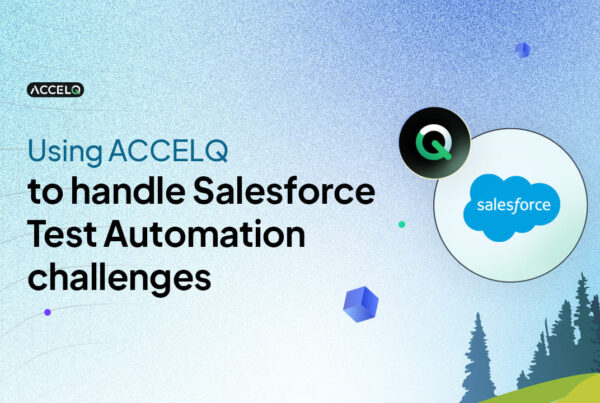 Using ACCELQ to handle Salesforce Test Automation challenges.
Using ACCELQ to handle Salesforce Test Automation challenges.






























